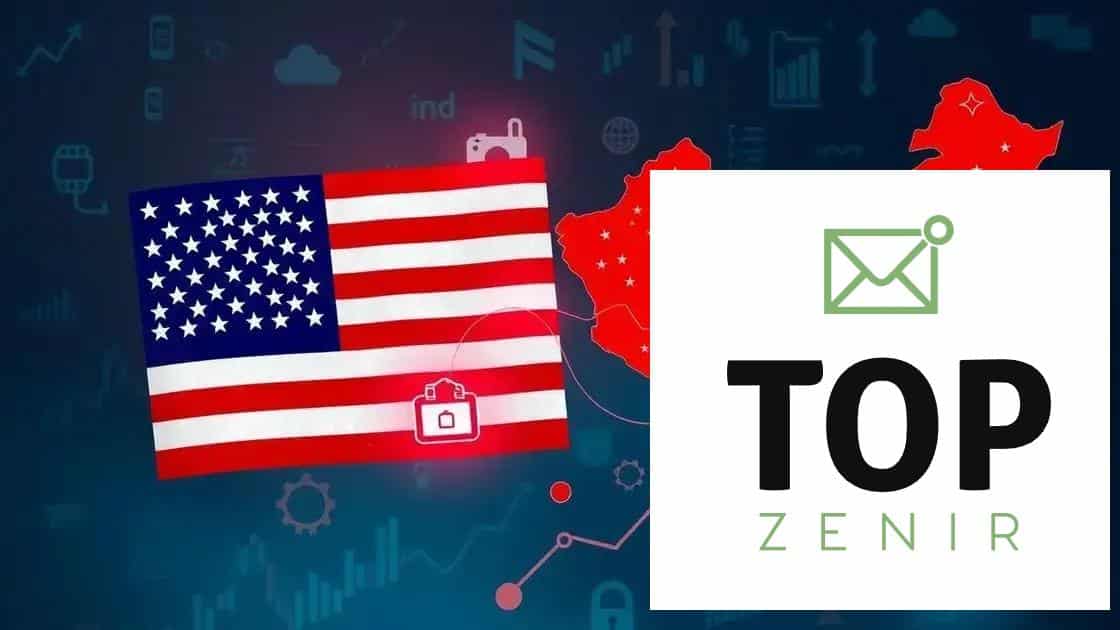US-China trade tensions and market consequences explained

US-China trade tensions and market consequences arise from tariffs, intellectual property issues, and economic competition, significantly impacting global markets, consumer prices, and investment strategies.
US-China trade tensions have become a pivotal topic in today’s economy. But how do these conflicts really affect global markets, and why should you be paying attention? Let’s dive into the complexities.
What are US-China trade tensions?
Understanding US-China trade tensions starts with recognizing the deep economic interconnection between the two nations. These tensions have been escalating for years, especially around tariffs and trade policies. The conflict has significant implications, not just for the US and China, but for the global economy as a whole.
Background of Trade Relations
The trade relationship between the US and China is one of the largest in the world. In recent years, however, various challenges have emerged.
- Trade deficits that raise concerns in the US.
- Intellectual property theft allegations.
- Complications from tariffs imposed on imported goods.
These factors contribute to a complex backdrop that fuels ongoing disagreements. As tensions rise, it’s important to understand how they impact economies and markets.
Current Events
Several pivotal events have shaped the landscape of US-China trade tensions. For instance, negotiations surrounding tariffs often dominate headlines. With both countries aiming to protect their economic interests, trade talks frequently fluctuate between progress and setbacks.
Additionally, reactions from businesses and consumers play a crucial role in how these tensions unfold. Changes in tariffs can affect prices, supply chains, and even employment.
Consequences for Global Trade
The implications of US-China trade tensions extend beyond the two nations. Other countries also feel the effects, as they navigate the shifting landscape of international trade. When the US and China fight over tariffs, global supply chains are disrupted, impacting businesses worldwide.
- Increased costs can lead to higher prices for consumers.
- Adaptations in trade flows may emerge, as businesses look for alternative partnerships.
- The uncertainty can stifle investments in multiple markets.
As the world watches closely, the evolution of these tensions remains critical. Keeping informed can help businesses and individuals navigate the complexities of this ongoing dispute effectively.
Key factors driving the trade conflict
The trade conflict between the US and China is influenced by several key factors. Understanding these factors is essential for anyone interested in the global economy. As the world’s two largest economies, their actions significantly impact international trade.
Tariffs and Trade Barriers
A primary driver of the trade conflict has been the introduction of tariffs. The US imposed tariffs on various Chinese goods, aiming to protect American manufacturers. In response, China implemented its own tariffs, leading to ongoing retaliation.
- Tariffs increase the cost of goods, affecting consumers.
- Trade barriers can disrupt established supply chains.
- As markets respond, volatility can increase.
These measures create tension as both countries aim to bolster their industries while navigating the complex landscape of international economics.
Intellectual Property Concerns
Another significant factor is the issue of intellectual property (IP) theft. The US government has accused China of stealing trade secrets and technology. This has raised alarms among American companies, seeking to protect their innovations.
Efforts to combat IP theft are ongoing. Businesses in both countries are on edge, concerned about the impact on their operations. Increased scrutiny of transactions only adds to the strain between the two nations.
Economic Competition
Economic competition fuels the trade conflict. As China’s economy grows, it becomes a formidable competitor in various sectors, such as technology and manufacturing. The US is keen on maintaining its global leadership, leading to aggressive trade strategies.
In this arena, both countries seek to enhance their global standing. Each nation pursues policies that can strengthen its position, often at the expense of the other.
Political Influences
Political factors also play a crucial role in driving trade tensions. National policies and government decisions are often influenced by internal pressures and public opinion. Leaders in both countries must navigate these influences carefully, balancing diplomacy with domestic expectations.
- Political campaigns may leverage trade issues.
- Public sentiment can shape policies significantly.
- Trade negotiations are often influenced by political agendas.
As such, the landscape of US-China trade tensions is often subject to change based on political developments.
Market implications for investors
The market implications for investors amid the US-China trade tensions are substantial. Understanding these implications is crucial for making informed investment decisions. As the trade landscape fluctuates, investors must stay alert to how these changes impact various sectors.
Volatility in Stock Markets
One of the most noticeable effects of trade tensions is increased volatility in stock markets. Investors often react swiftly to news about tariffs or trade negotiations, which can lead to sharp fluctuations in stock prices.
- Technology stocks can be particularly affected due to global supply chains.
- Consumer goods companies may see price increases that affect profit margins.
- Market sentiment often drives stock movements, creating opportunities for savvy investors.
Being aware of these trends can help investors strategize effectively.
Shifts in Sector Performance
Different sectors react differently to the ongoing trade conflicts. Some may benefit, while others could face challenges. For instance, the manufacturing sector could struggle with rising costs from tariffs, leading to diminished profits.
On the other hand, companies that source materials outside of China may find advantages. Investors need to monitor these shifts closely to identify potential risks and opportunities.
Global Supply Chain Adjustments
As trade tensions rise, companies may decide to adjust their supply chains. This shift can impact investments, particularly in industries heavily reliant on imported goods. Businesses might seek alternative suppliers or rethink their manufacturing locations.
Investors must consider how these adjustments affect company performance and stock prices. Keeping an eye on how businesses adapt to these challenges can provide crucial insights.
Long-Term Strategic Changes
The US-China trade tensions might also lead to long-term strategic changes in global trade dynamics. Investors should be prepared for a landscape that may involve new trade agreements or alliances.
- Understanding emerging markets can help investors diversify.
- Investing in companies adapting to new regulations can offer growth opportunities.
- Election cycles and policy changes should also be factored into investment strategies.
Overall, market implications for investors vary widely and require thorough analysis. Staying informed and adapting to the changing landscape is vital for successful investment.
Potential outcomes of the tensions

The potential outcomes of the tensions between the US and China can be far-reaching. Understanding these outcomes helps investors, businesses, and governments prepare for the changes that may come. As trade relations evolve, the repercussions could reshape various aspects of the global economy.
Impact on Global Trade
One of the most immediate outcomes is the impact on global trade flows. If tariffs remain high, countries may shift their trade partnerships. This could lead to new alliances forming, as nations seek to replace lost business with China or the US.
- Emerging markets might gain new opportunities.
- Established trade routes could change, affecting logistics and transportation.
- Global supply chains may need realignment to adapt.
As changes occur, monitoring these new trade dynamics is crucial.
Economic Slowdown
Another potential outcome is an economic slowdown in both countries. Increased tariffs lead to higher prices for consumers and reduced demand for goods. In response, companies may struggle to maintain profits, leading to layoffs and decreased investment.
The interconnected nature of the global economy means that an economic slowdown in the US or China could have a ripple effect worldwide. Countries heavily reliant on trade with either nation might face serious challenges.
Technological Decoupling
The trade tensions could also spur a technological decoupling between the US and China. As both nations focus on self-reliance, they may cut ties in technology sectors. This could result in separated ecosystems, where companies develop products and services independently.
- Collaborations in research and development might diminish.
- Companies may invest heavily in domestic technologies.
- Intellectual property issues could intensify.
This separation could reshape innovation and market access for both countries.
Geopolitical Ramifications
Beyond economic factors, there are significant geopolitical ramifications. The ongoing tensions might influence international relations, altering alliances and power dynamics. For instance, other countries may feel pressure to choose sides, complicating diplomatic relations.
Rising nationalism and protectionism could emerge as nations prioritize domestic industries over global cooperation. This shift risks creating a more fragmented global landscape.
Market Uncertainty
Finally, the overall uncertainty stemming from potential outcomes of the tensions creates volatility in financial markets. Investors may hesitate to commit funds amid unpredictable trade policies and economic forecasts. This uncertainty can lead to increased market fluctuations as reactions to news cycle through.
- Stocks may experience significant volatility based on trade developments.
- Safe-haven assets like gold could see increased demand.
- Investors should remain adaptive and informed to navigate these shifts.
Staying ahead of these potential outcomes is crucial for anyone involved in international trade or investment strategies.
Strategies for navigating the market landscape
When facing US-China trade tensions, it’s essential for investors and businesses to adopt effective strategies for navigating the market landscape. These strategies can help mitigate risks and seize opportunities amid uncertainty.
Diversification of Investments
One crucial strategy is to diversify investments. By spreading funds across different sectors and geographic regions, investors can reduce risk. Diversification helps protect against losses that may arise from trade conflicts.
- Consider investing in emerging markets that may benefit from shifts in trade.
- Explore different asset classes, such as bonds and commodities.
- Investing in sectors less affected by tariffs can provide stability.
This approach allows for a more balanced portfolio.
Staying Informed
Another effective strategy is to stay informed about current events and policy changes. Following news related to trade negotiations and economic indicators can help investors make timely decisions. Knowledge of upcoming tariffs or trade agreements provides a competitive edge.
Using reliable financial news sources and market analysis can enhance understanding. Attend webinars or financial conferences to hear expert opinions and insights.
Risk Management Techniques
Implementing risk management techniques is vital when navigating market volatility. Consider using stop-loss orders, which can automatically sell a stock when it reaches a certain price, thus limiting losses.
Additionally, options trading can serve as a strategy to hedge against potential declines in stock prices. This approach allows investors to protect their positions while maintaining the opportunity for gains.
Long-Term Perspective
In times of uncertainty, maintaining a long-term perspective can be a beneficial strategy. Avoiding panic reactions to short-term market fluctuations allows investors to focus on overall growth. By keeping sight of long-term goals, individuals can make decisions that align with their financial plans.
- Regularly review investment goals and adjust plans as needed.
- Consider the fundamental strengths of companies rather than just stock price movements.
- Invest with a long-term strategy to withstand market impacts from trade tensions.
A patient approach often leads to better outcomes over time.
Engaging Professional Advice
Finally, seeking professional financial advice can provide insight into navigating market dynamics. Financial advisors can offer tailored strategies based on individual goals, risk tolerance, and market conditions. Having an expert guide can make a significant difference during turbulent times.
By employing these strategies, investors and businesses can better navigate the complexities of the market landscape created by US-China trade tensions and position themselves for success.
FAQ – Frequently Asked Questions about US-China Trade Tensions
What are the main causes of US-China trade tensions?
The main causes include tariffs, intellectual property theft concerns, and economic competition between the two nations.
How do trade tensions affect global markets?
Trade tensions can lead to increased market volatility, impacting stock prices and trade flows worldwide.
What strategies can investors use to navigate these tensions?
Investors can diversify their portfolios, stay informed about market changes, and adopt a long-term perspective.
What is the potential impact on consumers?
Consumers may face higher prices for goods due to tariffs and trade barriers, affecting purchasing power.





